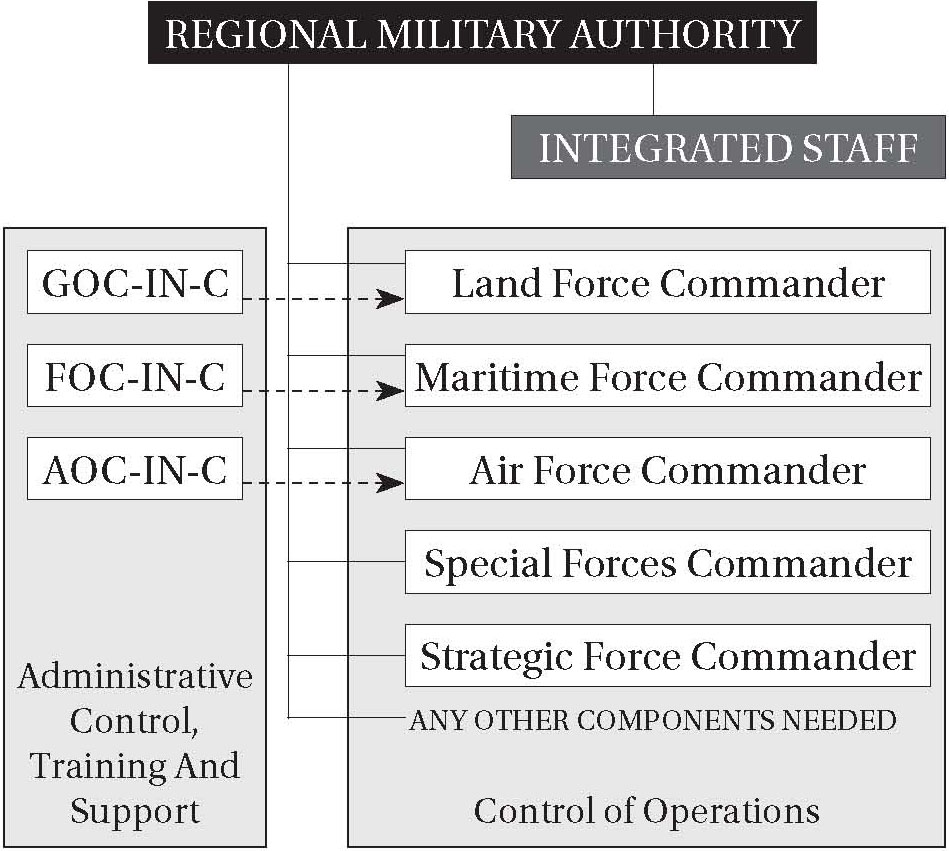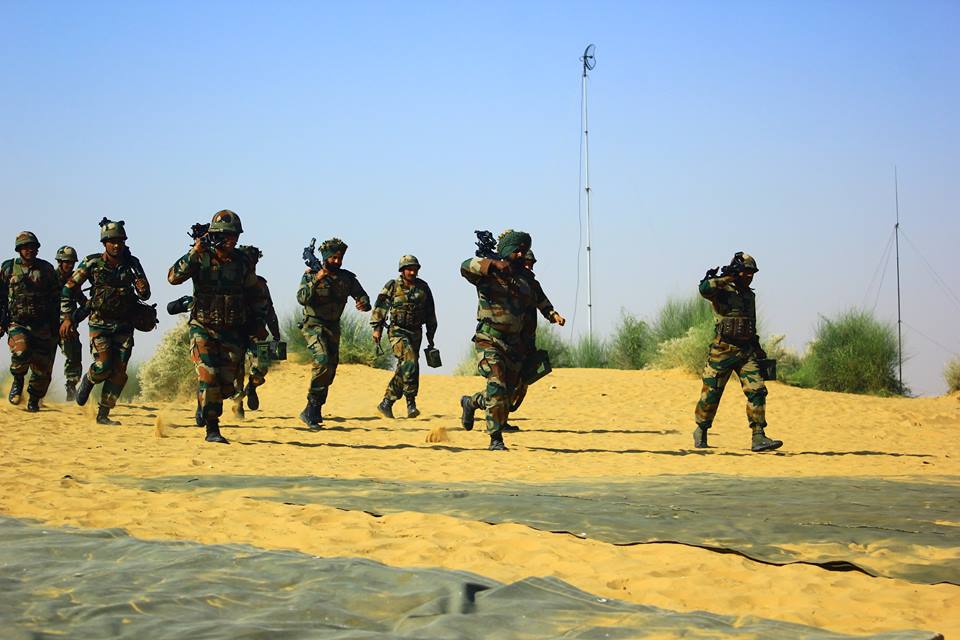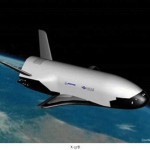A doctrine is for the future, but is based on past experiences and takes into account the present conflicts/wars with available technology and anticipated technological advances. From doctrine, flows the organisational structure of the military, its staffing, what the forces need to be equipped with, their training and sustainability. The Military Doctrine lets the people of the country as well as its adversaries and people at large know how the Indian military will execute military policy. More importantly, it lets the military personnel know how their contribution will affect the integrated application of force, when they are tasked for a certain operation. It lets them know “Why” they are doing “What” they are doing thereby giving it a definite purpose, enhancing their individual output.
A Military Doctrine is a stated principle of government policy on military affairs. A policy is a guide for action. It is a belief or set of beliefs accepted, held and taught by the military. It is the conceptual or theoretical foundation for application of military power. It is dependent on and interrelated with factors such as history, demography, geo-political threat perceptions, national aim, strength of the military, technology, organisational structures, and strategy and concepts.
A doctrine is for the future, but is based on past experiences and takes into account the present conflicts/wars with available technology and anticipated technological advances. From doctrine, flows the organisational structure of the military, its staffing, what the forces need to be equipped with, their training and sustainability. The Military Doctrine lets the people of the country as well as its adversaries and people at large know how the Indian military will execute military policy. More importantly, it lets the military personnel know how their contribution will affect the integrated application of force, when they are tasked for a certain operation. It lets them know “Why” they are doing “What” they are doing thereby giving it a definite purpose, enhancing their individual output.
Our Constitution is a good example of a doctrine. It is a set of beliefs followed so that India functions as a country. The National Aim culled out of the Constitution by the Joint Doctrine Indian Armed Forces (JDIAF-2017) and released on April 25, 2017, is Comprehensive National Development. It is a moot point whether it has all party political endorsement and whether all the political parties that have been in power have been sincerely working towards it.
It follows that the military is supposed to provide an environment for peaceful Comprehensive National Development without any disruption or deceleration by other nations or external forces. The military is the last bastion precisely for the reason that if the military is compromised, Comprehensive National Development cannot take place. A lot is invested in the military and it cannot afford to fail, hence Military Doctrine needs to be robust. The military is also required to assist the civil administration whenever needed.
The emphasis in the doctrine appears to be on “synchronisation” of certain operations instead of “integration”…
The military aim that flows from this is to ensure territorial integrity of the country and prevent interference from external forces, using military power in an offensive and/or defensive manner. Somewhere buried in the Constitution is also a mandate that the military is to preserve the democratic, secular and federal character of the Indian Republic. Military personnel take an oath every year that they will defend the Constitution to the peril of their lives whereas others take an oath to abide by the Constitution during swearing in.
This effectively prevents a dictator from taking over power and dictatorial tendencies of the elected executive are not permitted to undermine the Constitution. Hence, the military with powers within the military for legislative, executive and judicial functions has a pre-eminent position among other services especially with respect to the defence of the Constitution, which impacts on national security as a whole.
The Joint Doctrine
The Indian Military Doctrine should flow from what is mentioned above. The Indian Army, Indian Navy and the Indian Air Force (IAF) doctrines ideally should flow from the military doctrine. What has been released on April 25, 2017, is a Joint Doctrine. It states, “This Joint Doctrine is aligned with the existing Army, Navy and IAF doctrines. It provides control of certain common functions in an optimised manner of existing capabilities/capacities concepts, structures, mechanisms, practices and is restricted by availability of resources.”
The emphasis in the doctrine appears to be on “synchronisation” of certain operations instead of “integration”. It is supposed to have synergy between the three wings of the Armed Forces which essentially means that the application of joint force will have better effects than the sum of effects of individual wings. Synchronisation results in the summation of the forces applied, in a bottom up approach whereas integration leads to force multiplication because of a top down approach. What we have in the Joint Doctrine is a joining of the three service doctrines wherever feasible and could be called Joined Doctrine.
Military Doctrine needs to have a top-down approach rather than a bottom-up approach. A doctrine is about which activity is important and not which platform or service is important. The weakest link in the adversary’s air power target system will be the pilots as they are the hardest to replace, in good time. If the Special Forces are tasked to neutralise them, then the adversary’s air power cannot come into play. Similarly, air power can be used to attack what the land forces consider as the weakest link in the adversary’s target chain, may be the leadership, as it can be applied simultaneously at the Strategic, Operational and Tactical levels. Activity is important, not who does it.
The Joint Doctrine of the Indian Armed Forces appears to have taken this shape, as individual service doctrines were already formulated. Individual services have their own doctrines based on the nature of operations and the medium that they operate in. The medium has its own peculiarities such as the average speed of movement of the Army may be two knots, the Navy may be 20 knots and IAF aircraft have flown at 2,000 knots. The speed, range and inherent flexibility of air power make it very versatile and it influences the mindset of people who employ air power. The perspectives and attitudes of the personnel vary according to operations in the medium and specific roles such as combat, combat support or support service. This can only be imbibed when one grows within the service.
The common assets which are force multipliers would be assigned to the Military Regions that need them in time and space to maximise their utility…
The geography that can be covered also varies where aircraft can provide support to the Army/Navy by allocating targets in time and space in different theatres rather than bring a certain number of aircraft under a Force Commander and reduce the flexibility of their use as planned by the Air Force. The same aircraft can be used for ensuring that the enemy Air Force does not interfere with our Army operations. Currently, the extent of the theatres is different in the perception of the Army and the Air Force. The forces guard their turf zealously. If the Army calls J&K a theatre, for the IAF, it is the theatre of the absurd, as a Su-30 fighter aircraft can fly from Delhi to Singapore non-stop and may be, attack targets in between. The IAF would need a larger theatre to fight a war in, if scarce resources are not to remain idle or be wasted while an opportunity exists elsewhere. The most important tenet of application of air power is “Centralised control and de-centralised execution” which may not hold good for the other services.
On one end of the continuum, we have perspectives and attitudes that have been developed in each service that are so different because of objectives and medium that they operate in and on the other end, we need to integrate operations so that they deliver maximum effectiveness when military power is applied. The Military Doctrine needs to focus on how force can be applied in an integrated manner using more than one force/medium.
National Security is a blend of long term political vision, level of internal security, development level of human resources, availability of food for the population, degree of technological competence and availability of natural resources for exploitation by an appropriate industrial base, protected by military might. All these aspects need to have an appropriate doctrine to maximise their potential and let the nation and themselves know what is expected of them.
In the Joint Doctrine, the doctrine itself has been referred to as Armed Forces Doctrine and Military Doctrine in different places. National Security has been abrogated as the sole domain of the military as is amplified in National Security Objectives and National Security Policy. National Security Strategy indicates the primary role is that of the military with the rest as ‘add ONs’. Central to the National Security Strategy is ‘Deterrent Nuclear Capability’. An appendix on Civil Military Relations is out of place in a Military Doctrine.
There are references to Internal Security in this document, but that is not essentially a part of military doctrine. It should be a part of the Internal Security Doctrine. It is essentially a function, under aid to civil administration. The military cannot have prolonged involvement in internal security duties as that will create disaffection within the area from which the military draws its resources. The philosophy of application of force is different and is best left to the police forces.
The statement, “No formally articulated National Security Policy or National Security Strategy does not imply that they do not exist or are not sufficiently understood” leads one to believe that they exist but mean different to different people as it is not formally articulated. In this scenario, it is debatable how they have been sufficiently understood. The Strategy may be classified but the Policy needs to be articulated. The Policy limits the forces to what their strategy can be and necessitate adherence to the Geneva Convention for human rights and should be known to the forces. In a scenario the Strategy, that a Commander will follow, needs to be classified as divulging it may jeopardise the intention of achieving the National Aim.
If an integrated application of force is needed, then it needs to be well planned, objective based and executed with the supporting services providing support in time and space and not rely on cooperation (“If I have spare resources, I will give it” kind of attitude). There will be conflicting requirements of say, between Counter Air Operations and Counter Surface Force Operations by the Air Force. That is a challenge that can be resolved by the Integrated Operations Commander.
Indian Military Doctrine
The doctrine for integrated application of military power may be referred to as the Indian Military Doctrine. If the Military Aim is to be achieved, following a top-down approach, the country may be divided into a maximum of three or four Military Regions. Geographical contiguity and political boundaries play an important part in such a division. We have China across our Northern border, Pakistan across the Western border and the seas to the South with a vast maritime boundary. Geography has a major impact on the weapon system, type of warfare and consequent training of personnel. Our Northern border is in the mountains and we need troops trained in mountain warfare and aircraft that can support them at high altitudes and in the deep valleys. Our Western border has all types of terrain and hence the troops need to be trained accordingly. The Indian Navy has a major role against threats from the sea across our maritime boundary.
At the Military Region level, the Commander-in-Chief would become the Land Force, Maritime Force and Air Force Commanders…
These would need a military authority to execute operations with integral Army, Navy and Air Force components to function in an integrated manner to deliver the biggest bang for the buck. This change in structure would be essential for cost effective utilisation of available resources. This would address the issue of geography, facilitate employment of air power in a meaningful manner and facilitate integrated application of military power. It still leaves types of common assets which are very few in number like Strategic Forces (Nuclear), Special Forces, Strategic Reconnaissance, Air-to-Air Refueling, AWACS, Cyber and space-based assets that need to be commanded by a Central Military Authority (CMA). These could be allocated depending on the need of a particular region in space and time.
The CMA needs to have control of Intelligence, Integrated Planning, Operations, Operational Readiness Inspections (with respect to Training, Maintenance and Administration), acquisition and all functions common to three services besides the common assets. These common assets which are force multipliers would be assigned to the Military Regions that need them in time and space to maximise their utility. The existing organisations would be responsible for Training, Administration and Support including aid to civil power. They should have boundaries congruent with the Military Regions. During peace time Training, Maintenance and Administration would continue and Units would be placed under the Military Region depending on the need to neutralise the impending threat. This could probably be the backbone of the Military Doctrine with a top-down approach to ensure integrated application of military force in a Military Region. The Military Authority for these regions could have senior support staff from the three services.
In effect, we have a CMA who will be the senior most military officer. His mandate would be application of military power in an integrated manner through Regional Military Authorities (RMAs). The RMAs could have Integrated Task Forces for a specific purpose, the size of which will vary depending on the task at hand and which could be formed as and when the situation demands. The existing organisation needs to continue with the COAS, CNS and CAS, but without the mandate of Operations which would be the domain of the CMA. The existing Commands would be congruent with the Military Regions for better cohesion. The administration and training would continue during peace time with the CMA and RMAs carrying out their functions of Intelligence, Integrated Planning, Operations, Operational readiness Inspections and Acquisition.
When required for operations at a national level, integration is created by inducting the Chief of the Army Staff (COAS), as Commander of Land Forces which includes any force that uses land as a medium, Chief of the Naval Staff (CNS) as Commander of Maritime Forces which includes any force that uses the seas as a medium and Chief of the Air Staff (CAS) Commander of Air Forces which includes any aircraft/missiles/drones or anything which uses the medium of air, even if it belongs to other organisations, except air power integral to an Army thrust and Naval task forces, to assist the CMA while continuing with their original functions. Similar integration would be at a level lower at the Military Regions and subsequently at the Integrated Task Force levels within the Region.
At the Military Region level, the Commander-in-Chief would become the Land Force, Maritime Force and Air Force Commanders. They would then have control of operations, administration and support functions. The Border Security Force would get embedded with the Land Force and Coast Guard with Maritime Force and anything which flies, with the Air Force. This is shown at Fig 1. The Regional Military Authority would have the requisite staff for planning and conduct of operations.

Fig 1: Diagrammatic representation of the Regional Military Authority indicating linkages. The arrow indicates transformation.
The Force Commanders need to be deeply involved in integrated planning. Their knowledge of using their force individually for the benefit of the integrated plan needs to be utilised. They also need to know what to train for. Planning needs to be evolutionary in nature as the best laid plans can go haywire after contact with the adversary is established and the first round is fired.
Authorisation for this transformation of placing combat units and their Commanders for operations to be controlled by the CMA/RMA/ITF will need to be authorised at the highest practical Political level, the Cabinet, on the advice of the CMA and the Service Chiefs and should not be delegated to the bureaucracy. Allocation of Special Forces, Strategic Forces or utilisation of assets under the CMA and its quantum, will depend on the task at hand and the need for them. These should also be done by the Cabinet on the advice of the CMA and the Service Chiefs.
The circumstances that the authors of this Joint Doctrine were in, during the last four years, would force certain limitations. One of the limitations being that the individual service doctrines have already been formulated and they need to be accommodated. However, it is a good attempt which can be improved upon albeit with the participation of statesman-like political leadership. Nothing short of an Indian Armed Forces Act that includes the changed structure above, passed by the Parliament, can usher in effective integrated application of force by the Army, Navy and Air Force and reorganise the Armed Forces for effective utilisation of Integrated Military power. It goes without saying that this would need a new Indian Military Doctrine.





